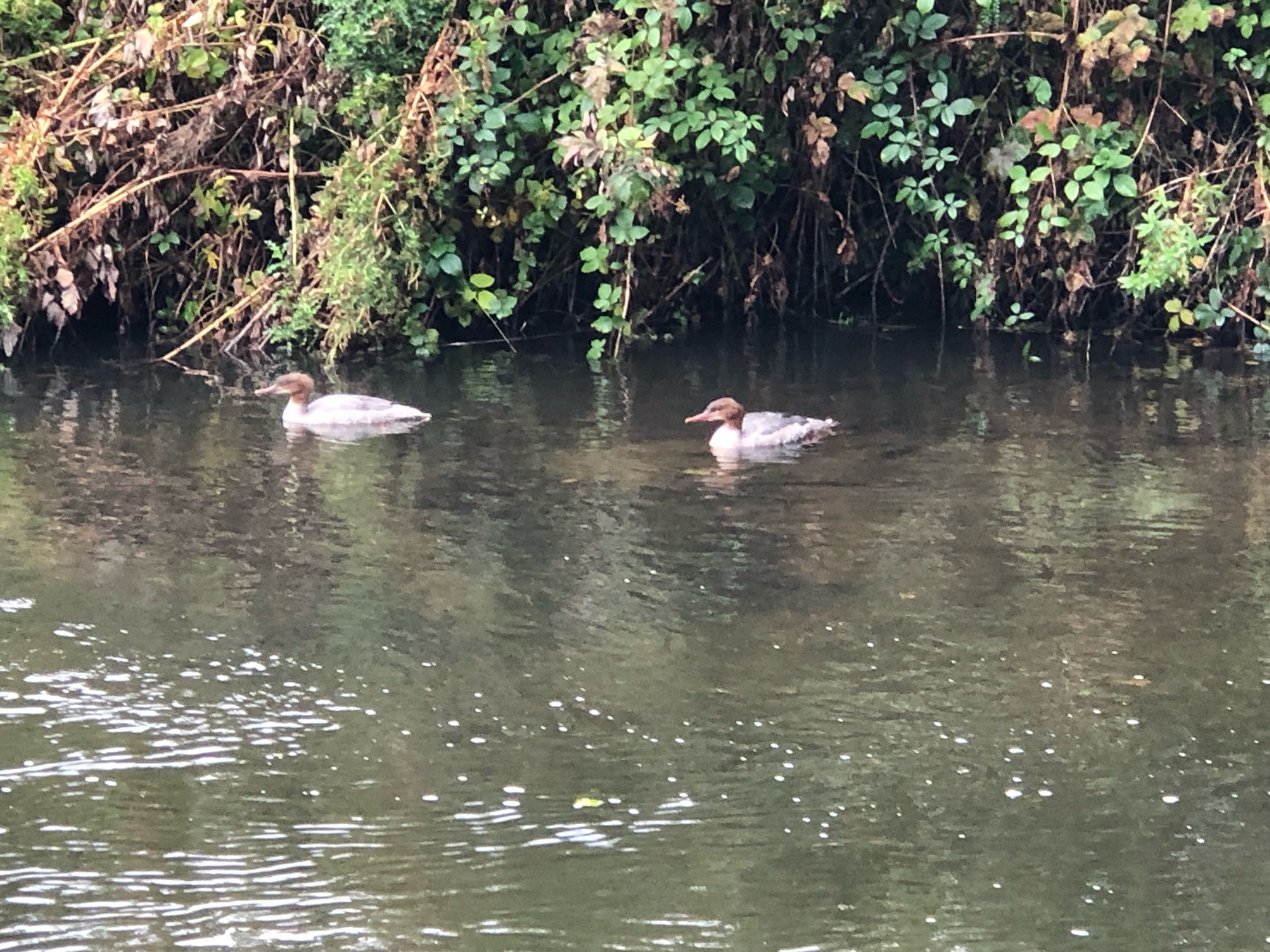Sickleholme Nature Notes
Our monthly notes stretch from the Spring of 2017, so it is always nice when something new surprises us. Such was the case in October.
Below the 13th tee runs the Upper Hurst Brook, which widens briefly at a spot where many of us will have fished out mishit golf balls. That was where our professional, Simon, discovered two juvenile Goosanders and managed to take the photograph that is with this article. Goosanders are large fish-eating ducks that are normally found on fast flowing streams or, in winter, on reservoirs. We have recorded Brown Trout in that part of the brook, but I have never seen these wary ducks in such a narrow and enclosed waterway. Well done, Simon!
Winter thrushes have arrived in numbers with good counts of Redwing, and smaller numbers of Fieldfares, as well as an increase in Blackbirds from the Continent. Several members have mentioned geese overhead and this is typical of the time of year. Small groups may be the local feral Canada Geese, but those flying higher and in V-formation have been Pink-footed Geese. These are genuinely wild birds who breed on Arctic tundra and in places such as Iceland, Greenland and Svalbard. One population heads for the UK in autumn and regularly feed up on the Lancashire Mosses before relocating to North Norfolk for the winter; North Derbyshire being on the flightpath. Numbers in Norfolk often peak at around 40,000 by Christmas.
With a mix of weather patterns during the month, there has been a lot of leaf fall as well as attractive autumn colours. As usual, fungi are appearing in many places although the wet periods seem to have damaged a lot that I managed to see. Apart from a small survey a few years ago, I haven’t been able to find anyone who can identify more of these to species level for us. If you can assist, then do please let me know.
Bryan Barnacle


